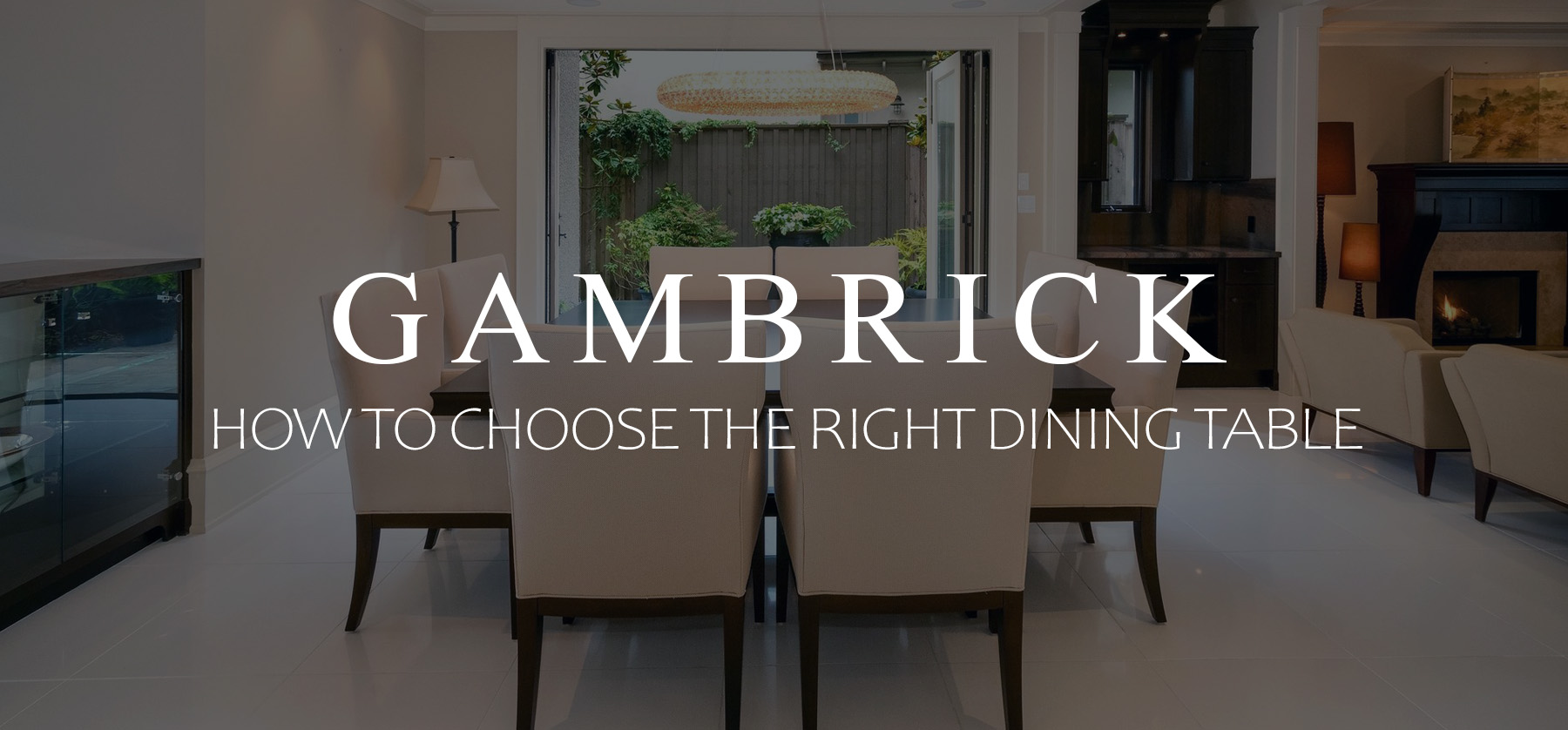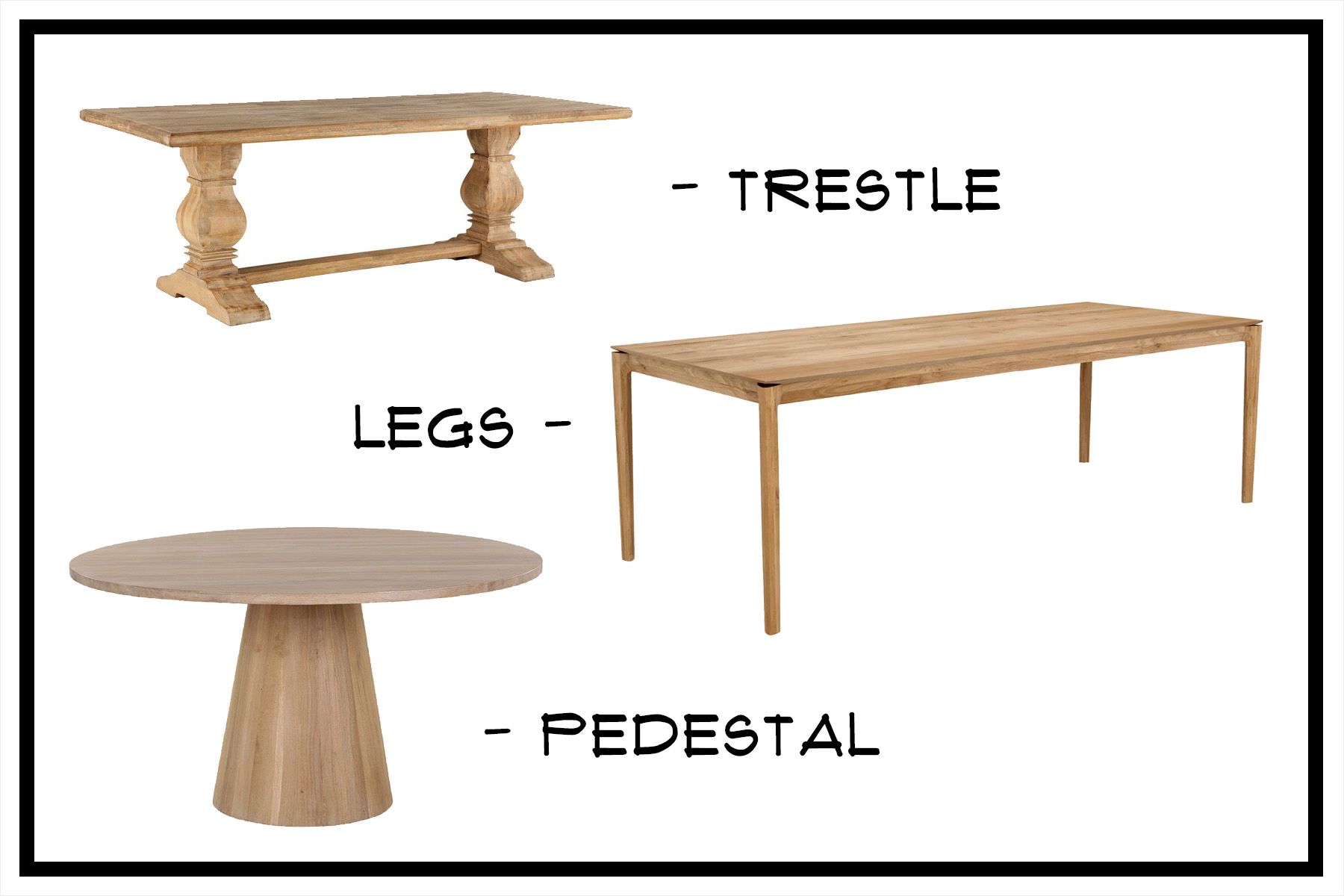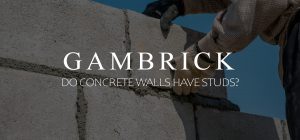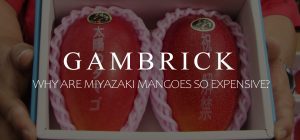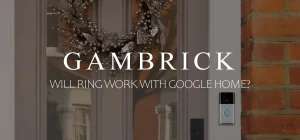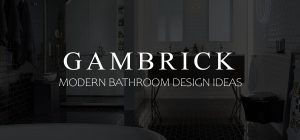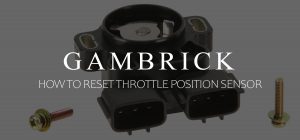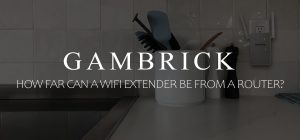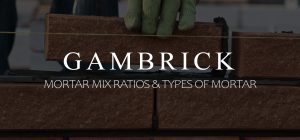How To Choose The Right Dining Table
It’s very important to choose the right dining table for your home. They come in a wide variety of shapes, sizes, colors and materials. Which material is best? What about the shape? How big a table should you buy? What color? Material? And then there’s the chairs and room dimensions to consider. A new dining table can be an expensive purchase and many people own their set for life. Before you start thinking about looks, figure out what size table your shopping for. The size of the room is very important because it’s often a limiting factor. You don’t want to buy a table too big for the room. You also want to make sure it fits the correct amount of people for your needs.
The dining table needs to be big enough for the number of people you want to seat and still leave enough room to walk around it. This means at least 3 feet from the edge of the table to the walls or furniture. The width of your table should be at least 36 inches so there’s enough room for place settings as well as food, glasses and pitchers. Generally as the table length increases, so does the width of the table.
A dining room is the heart of a home where family and friends gather around a great meal. Choose dining furniture that’s comfortable and fits your needs is an important part of the decision. Our guide will help you choose a dining room table that not only fits your space but has functionality and style.
How To Choose A Dining Table Size
Choosing the right sized dining table is your first step. You may find the perfect dining table in a showroom or picture, but if it’s too small for your family or too big for the room, it won’t work. You need to figure out the right table size first and then start shopping.
Measure the table to wall clearance. To figure out the right size dining table for your room, you first need to measure the room. A dining table should be at least 3 feet away from the walls and furniture. This allows enough room to walk around the table when everyone’s seated. It’s also more than enough room to pull out chairs to sit and get up or to open cabinet doors and drawers.
3 Feet is the minimum amount of space you need but 40-48 inches is better.
Measure the length of the room from wall to wall and subtract 6 feet. This gives you the maximum length of your table. For example, if you have a 14 foot wide dining room, subtract 6 feet and you get a maximum 8 foot table.
Do the same for the width. But keep in mind that most tables start at 30 inches wide and get wider as the table gets longer. Generally dining table are 36-42 inches wide.
If you have other furniture in the room, measure from the wall to the edge of the furniture. For example, in that same 14 foot dining room, if you have a 2 foot cabinet against the wall then what you have is 12 foot of usable space. Subtract 6 feet from that and you get a maximum 6 foot long dining table.
Do the same calculations for any shape table.
Choosing The Right Dining Table Size
The amount of people that can comfortably fit at a table depends on the shape and size. Keep in mind that for casual dining you need about 24 inches per person. But for more formal dining you need 30-32 inches.
Here’s a reference guide to help you decide what size dining table you need. The round and square tables are measured in diameter while the rectangle sizes are measured long ways. Rectangle tables range from 30 inches to over 4 feet wide. The longer the table is, the wider it generally gets.
| Size: | Oval & Rectangular Will Comfortably Seat: | Round & Square Will Comfortably Seat: |
| 48 inches (4 feet) | 4 people | 4 people |
| 60 inches (5 feet) | 6 people | 4 people |
| 72 inches (6 feet) | 6 people | 6 people |
| 96 inches (8 feet) | 8 people | Not a typical size |
| 120 inches (10 feet) | 12 people | Not a typical size |
Remember that chairs matter when figuring out seating space at a table. Chairs with arm rests are generally wider so you can git less seats at a table. Most dining chairs without arm rests are 18-20 inches wide.
Balancing Size & Space
It’s important to balance the size of your dining table with the size of the room. A small table in a large room generally looks out of place, while a table that’s too large can make a room feel cramped and uncomfortable. Scaling the table to the size of the room maintains balance while ensuring there’s enough space.
If you need more seats than your table size will allow, it’s almost always better to use slimmer chairs or a bench seat. Use the space you have smarter instead of cramming large furniture into small rooms.
To figure out the ideal table size you need, measure your dining room carefully. Consider the position of other furniture like cabinetry. Check to make sure you can open doors if you have them in the room.
Consider the flow of your house as well. How will you be getting from the kitchen into the dining room. It helps to draw a plan of the area to visualize the layout. I like to tape off the area and visualize using the space before I fill it with furniture. This can prevent design mistakes and save a lot of money.
Walk around the room with the furniture layout marked, open doors and drawers without crossing into the marked area on the floor. If you can comfortably do everything you need to without crossing onto the marks then your table is the right size.
How Much Should You Spend On A Dining Table
The right dining table for you should be the right size for your home, should seat enough people and be stylish. It should be the right shape for the room it’s in and well built. And it needs to fit within your budget. Don’t overspend on the most expensive table you can find but don;t buy something cheap either. A good dining table can easily last over 10 years so keep that in mind. Spending a little more for quality is a good idea because they’re a long term investment.
Stay away from trends. A well made table should last at least five to 10 years so you don’t want it going out of style in a year or two. I always keep it simple. A wood table without lots of detail or scroll work is best. Work is versatile so you can pair it with just about any chair. I recommend going very basic with the table details but have fun with the chairs. They’re cheaper and easier to swap when styles change.
Along with affordability and a simple style, durability and quality are important to look for when inspecting tables at a furniture store. Think about how it feels sitting at the table. Will it will be comfortable for long periods of time because most people do more than just eat at their tables.
Examine the floor models for signs of wear. Look for nicks and scratches that can indicate how the table would hold up over time. Lift one end of the table and see how heavy it is. Heavier materials are generally a sign of a more durable, better made table. Cheap materials scratch and dent easier.
How Many Seats Does A Dining Table Fit?
Getting the seating right is another important thing to consider when you choose the right dining table. Manufacturers generally recommend the number of people that can comfortably sit at their tables. If they don’t, the calculation is 24″ per person for casual dining and 30″ for something more formal. Be careful not to overcrowd the table with too many chairs.
Of course these are just guides.You also need to adjust for the size of your chairs. Dining chairs with arm rests are wider than those without. If your set has all arm rests you won’t be able to squeeze more placements in. However, if your chairs have no arm rests you can push them closer together. Most chairs without arm rests are about 18-20 inches wide so you can usually push them close together to fit another seat per side.
Benches are another way to go. With a bench seat on one or both sides of the table you can squeeze in really tight. Kids always seam to love picnic style bench seats but the drawback is usually no back rest.
The right size table and chairs provides enough space for diners to sit and eat comfortably.
- Use a bench instead of chairs to free up more room. Benches are great for kids and are more casual but are not for formal dining.
- Chairs without arm rests are usually smaller so you can usually fit more seating.
An extendable dining table is another option. A removable leaf or folding table means you can shrink or grow the table as needed. Keep the table small for day to day use. But when there’s a celebration with lots of guests, extend the table to its full length and bring in more chairs from wherever you find them.
Choose The Right Dining Table Shape
Choosing the right shape for your dining table is usually limited by the room’s size and how many seats you need. Round is best for small 4-6 person tables. More seats means a round table has to be huge to fit all the extra chairs. Most dining rooms can’t fit a round table that size so it becomes unpractical. That’s is why most 6+ seated dining table are rectangular.
The shape of a dining table helps define a room’s look and style. But it’s very important in terms of space. Choosing a table that matches the shape of your room enhances balance. Most dining rooms are rectangular, so a rectangular dining table is the usual choice.
A round dining table is better for smaller rooms or wide open large spaces where room shape doesn’t influence the table.
Think about the primary use for your table. Round or square tables are great for smaller areas or to create a more intimate setting. A long, rectangular or oval table is are more formal and great for hosting large dinner parties.
Consider other uses for your table: Do you work at the table or do homework? Do crafts? Artwork? Although you may only need seating for four at mealtimes, you may need more space than you think for other things.
The most common table shapes include:
Rectangular: Fits well in long dining rooms. Great for defining rooms in an open floor plan home.
Square: A fantastic choice for smaller or square rooms. Creates an intimate setting. Seen as more modern and formal than round.
Round: Cozy, intimate and a good space saving option. More casual than square.
Oval: An alternative to a rectangular table with a more traditional look. Less modern than rectangular.
Table Shape vs Room Shape
When choosing the right dining table shape, consider the shape of the room too. You want a balance between large pieces of furniture and the room. When you put a rectangle table in a rectangle room, there’s a somewhat equal amount of space all around the table between the edge of the table and walls or furniture. Putting a rectangle table in a square room leaves too much room on the sides with pinched ends. However, this configuration can work if you place large furniture along the sides to use up that space.
Square or round tables naturally fit well in a square room, but leave too much space in a rectangular room. This can also be fixed by using other furniture.
This is why I always decorate a dining room as whole instead of just picking a table. Other furniture pieces can help a dining table fit in a room it would otherwise look strange in.
Round Dining Tables
Round tables are great for small or large open spaces. They don’t have sharp corners to bump into and create smaller intimate areas. Round dining tables are generally considered more casual but can be very formal when set properly. A small round table is more fitting for a candle lit dinner for two than a larger rectangle because you sit closer and right across from the other person. But the table has to be fairly small, 4 seats is best. Larger round tables put you too far away from your partner.
You can fit more people around a round table than a square the same size because it doesn’t have corners. Pedestal tables are even better for fitting more guests because they have more legroom. Those 4 legs can get in the way.
Seating size for a round table. Manufacturers generally offer seating recommendations for their tables. But you can usually add more seating if you choose the right chairs. Remember that a pedestal base allows more seating because it eliminates the legs that can get in the way of a chair.
- 3 foot diameter table with a pedestal base seats four
- 3 foot diameter table with legs seats four
- 4 foot diameter table with a pedestal base seats four
- 4 foot diameter table with legs seats four
- 5 foot diameter table with a pedestal base seats six
- 5 foot diameter table with legs seats four
- 6 foot diameter table with pedestal base or legs seats eight
- 7 foot diameter table with pedestal base or legs seats nine
Many round tables come with leaves that can be installed to create an oval. This is a great feature if you occasionally have guests over for dinner.
Round table tip: Large round tables can make it difficult to reach for food. Rectangular shapes generally work better for seating large crowds because they’re not that wide across. If you choose a round table 5 to 6 feet or more in diameter, consider adding a center lazy Susan.
Rectangular Dining Tables
A rectangular table works well in a long dining room or to define rooms in a wide open floor plan. For most tables, as the table length increases the width grows as well. Most rectangular tables start around 30 inches wide but can grow to 4 over feet. The average is 36-42 inches wide.
Most homes built today include an open floor plan. The kitchen flows right into the living area without any walls to define spaces. A great way to do it is with a large rectangular dining table. Place the table in between rooms to create clearly defined areas. This provides some opportunity to play with different decor and colors a bit.
Most dining rooms are built in a rectangle shape to accommodate a rectangular table. Dining rooms are typically thought of as more formal which suits a long, narrow table. In these cases it’s hard to use any other shape than a rectangle or oval. Just make sure to stick within the measurement guidelines of 3 feet from the tables edges to walls and furniture.
Seating size for a rectangular table. Manufacturers typically offer seating recommendations, but these are the general sizes I stick to when choosing a rectangular table.
- 4 foot long table seats four
- 5 to 6 foot long table seats six
- 7 foot long table seats eight
- 8 to 9 foot long table seats 10
- 10 to 11 foot long table seats 12
Space saving tip: Try a bench instead of chairs on one or both sides of your table to squeeze in more guests. This is especially useful with kids. They always seam to love picnic style seating. But benches are considered more casual. For fine dining switch the bench for chairs. Make sure the bench fits under the table when you push it in.
Square Dining Table
A square dining table is very similar to a round one. They create a more intimate dining experience because everyone is an equal distance apart. Square tables come in a variety of sizes that typically seat 4 – 8 people. Generally round tables seat more than square even though they take up about the same amount of room. This is because round tables don’t have edges.
If your room is square, the table’s shape will complement the room around it. Small square tables are most common in smaller spaces but they look great in large rooms too. They’re really good at defining a space and separating rooms in an open floor plan.
Square dining tables are generally considered more Modern than round or oval. This is because of they’re sharp corners.
Many square tables come with leaves that can be installed to turn them into rectangles. This is a great feature if you occasionally have guests over for dinner.
Seating size for a square table. Manufacturers typically offer seating recommendations, but these are the general sizes I stick to when choosing a square table.
- 3 to 4 foot square table seats four
- 5 to 6 foot square table seats eight
Square table tip: Like a round table, the bigger a square table is, the harder it is to reach for food. If you’re using a large square table that’s over 4 feet wide, consider using a lazy Susan.
Oval Dining Tables
Oval dining tables create unique visual interest. They’re very similar to rectangular dining tables in most aspects, but their rounded corners create the illusion that they occupy less space.They come in two basic designs.
- Some oval tables are basically a rectangle with rounded edges. The sides are straight.
- Some tables are oval all over the table which includes the sides.
Oval curves can help balance angular lines found on other design elements within the room. Oval tables create intimacy and feel sleeker. Use them when you need to seat several people at once in a smaller size room.
Seating is basically the same as a rectangle table. The only real difference is the rounded edges.
Seating size for a rectangular table. Manufacturers typically offer seating recommendations, but these are the general sizes I stick to when choosing an oval table.
- 4 foot long table seats four
- 5 to 6 foot long table seats six
- 7 foot long table seats eight
- 8 to 9 foot long table seats 10
- 10 to 11 foot long table seats 12
Oval table tip: A round table can be turned into an oval by adding a leaf. This is a great option when you have guests over and need more seats. But I prefer oval tables that are rounded everywhere. They’re a very elegant design but more expensive.
Which Shape Dining Table Is Best?
The most common shaped dining table is a rectangle or square, but that doesn’t mean they’re necessarily the best choice for every home. Rectangular dining tables are great because they can seat a large number of guests and scale down if they have a center leaf. And since most dining rooms are also rectangle they work well in most homes. They’re also a great divider in an open floor plan home that can define a space.
A round or oval table can give you a little more space to move around since it cuts off the corners but still has a large surface area. For tighter rectangular spaces, an oval might be the best option because it’s slimmer at the edges. This also gives you more room for corner furniture.
Round or oval tables can be great for parties because there’s no traditional head of the table. They’re great for poker games.
The best shaped dining table is different for every home. Here are a few guidelines that can help:
- If your looking for a formal dining table then rectangle is the way to go. It’s the most common shaped table for a reason. And they’re also the biggest. A long thin dining table is a classic design that’s been around for centuries.
- Small round or square 4 person dining tables are best for intimate settings. They’re also great for small rooms or to define areas in an open floor plan.
- Oval tables are very elegant. I prefer the type that’s oval all over rather than a round table with a leaf. Oval is a little less formal than rectangular. They’re generally slimmer and shorter and don’t have a center leaf. I like using oval tables in an angular home to offset the square edges.
Choose The Right Material
The material of your dining table should flow with the rest of the home. Select something that blends well with your home’s overall style and color scheme. If your dining room has other furniture, keep that in mind as well.
There’s no right or wrong choice. This is a chance to experiment with materials to define your space. A reclaimed wooden table provides a defining focal point and conversation piece. But a glass topped table opens up the space.Some materials scew more Modern while others lean in a Traditional direction.
Common dining table material choices include:
Solid wood: A timeless option with a warm, charming feel. The appearance varies based on grain and color. Wood complements a wide range of decor styles and is available in lots of colors and finishes. Wood is also easy to repair.
Reclaimed wood: An Eco-friendly wood that works well with lots of styles. The wood’s appearance provides character and a great focal point. But they can be harder to eat on because the surface generally isn’t totally smooth.
Glass: An elegant style that opens up a space. Glass is really nice in small rooms or apartments because it’s not opaque. It’s usually paired with metal so you’ll have to choose a finish too.
Stone: Granite and marble are luxurious options with a timeless quality. Generally the legs are made of a different material so you’ll have more than just the stone to choose.
Laminate: Laminate is a cost effective option that provides many of the styles and colors that look like traditional solid wood for less.
Metal: A durable option that works well in an industrial or contemporary styled home.
Plastics or Laminates: Man-made materials are an inexpensive option. They can last a long time, but aren’t considered the highest quality material. They tend to resist staining and require very little upkeep, but they’re often considered cheap.
Dining Table Legs
When shopping for the perfect dining table, another thing to consider is the leg design. Table legs have an effect on how many people you can fit at a table. Make sure leg space isn’t being hampered by the table’s supports. Some designs may look nice but not be comfortable to sit next to.
Sit at the table to see if your legs hit the table’s legs. Make sure you have enough room for your knees when the chair is pushed all the way in. Check if you can cross your legs underneath the table. The apron, the frame that holds up the tabletop, can reduce the room you have to maneuver.
Pay attention to the table’s leg width and where the legs are placed. In general, a table with thinner legs, or with legs at the corners, will make it easier to squeeze in extra chairs.
There are three main types:
Trestle. Trestle legs are two large legs at both ends of the table that get wider at the bottom. They’re set further in from the edges than 4 leg tables which makes more room for chairs. They’re traditionally paired with bench seating. Trestle legs let you put chairs along the edges but they can get in the way of your feet under the table.
Legs. Dining tables with 4 legs are the most common design. One leg sits at each corner to support the table. Chairs sit inside the legs. This provides lots of space for chairs with nothing getting in the way of your feet but you can’t put chairs along the edges.
Pedestal. Round or square tables often feature a pedestal leg. They’re a single support that goes down from the center of the table. They’re great for round and square tables because you can fit chairs all along the edges. But they can get in the way of your feet under the table.
Make Sure The Table Is Well Built
A good dining table will be sturdy and well made. It should have a good quality finish that can withstand heavy use and show little wear from day to day use. Well made tables last a long time and don’t damage easily. However, cheap tables are easily scratched and dented.
The table’s material is a huge part of it’s quality. But do are it’s joints. These parts are called joinery. It’s the industry term for the places where the base and tabletop fit together . The more solid the joinery is, the longer the table will last.
Inspect underneath the floor sample to see the joinery: Wood joined directly with wood is very strong. Attachments and hooks can weaken the table’s construction. In general, simpler is better.
Inspect the connection points where the legs meet the table top and corners. If the pieces are starting to separate and you see gaps at the corners, or it’s wobbly when you move it, it’s not well made.
Stay away from really inexpensive tables: They usually have very cheap joinery like staples and glue. This is where manufacturers cut costs.
Chairs
Some dining tables are sold as a set with chairs included. I prefer to buy mine separate. Buy a simple, well made table and then buy chairs that fit. The simpler the better on the table. But you can have fun with textures, materials and colors when it comes to chairs. They’re easier and less expensive the replace as styles change.
The most important thing to consider when buying chairs is that they fit the table. Next is comfort. If you find beautiful looking chairs that don’t fit properly or are uncomfortable to sit in, what good are they.
I always recommend buying a few extra chairs just in case. Especially if you have a table that’s expandable with a leaf.
In terms of chair material, you can mix and match. But I generally like to stick with a chair that matches or accents the table. Modern chairs with a Colonial style table would look disjointed. I also like to coordinate sizes. A small table with huge chairs looks weird. When you buy pieces separately, making sure they look good together is very important. If you don’t feel confident in doing it, buy a nice set. There are plenty for sale in showrooms or online.
Pro Tips
The ideas in this guide will help you choose the right dining table, but it’s your home so buy what works best for you. Measure the space and buy something that fits with enough seats for your needs. Dining tables serve a function and need to work and fit inside the room, not just look good. And remember that your dining table probably serves as more than just an eating space, so think about how you’ll use the table from day to day for things other than eating.
Here are a few tips that can help you choose the right dining table.
Layout: I use tape or bed sheets on the floor to layout furniture. Cover the area where the table, chairs and other furniture go before you buy anything. This allows you to visualize the room and walk around where your furniture will eventually go. If it doesn’t feel right you still have plenty of time to make adjustments before you buy.
Rectangular and square tables: Each person should have about 24 inches of room to eat comfortably without banging elbows with the person next to them. They also need about 12 inches of depth for a plate, glass and silverware. A rectangular table measuring 4′ long and 3′ wide seats up to four people based on these allowances. Adding an additional 12″ of length at each end of the table seats up to six diners: two on each side, one at the head of the table and one at the foot.
Round tables: A pedestal base provides more leg room compared to a table with legs. A 5′ round table with legs fits up to four diners but the same table with a pedestal seats up to six. Keep this in mind when selecting your table.
Height: Most dining tables are 30″ high and most chair seats are 17″–19″ high. For comfort and leg space, try to allow at least 12″ from the tabletop to the top of the seats.
Clearance: Allow at least 36″ between the table edge and the walls or the table edge and any furniture. This allows enough room to pull out chairs to sit or stand up and ample space to walk around the table.
Tips For Choosing The Perfect Dining Table
1. Try and allow 24” per person with a 6” buffer at each end of a rectangle or oval table. For example, if you want 4 people to sit along each side of the table, the length should be at least 9 feet.
2. Maintain at least 36” of space around your table ensures there’s enough room to sit and stand comfortably. This is from the edge of the table to the wall or furniture. leave more in front of doors that open inward.
3. Don’t forget the chairs. Chairs with arm rests are wider than chairs without. Nothing’s worse than a chair that won’t fit under the table. The average chair size without arm rests is 18-20 inches wide.
4. It’s important to consider the chairs for round and square tables too. Round or square tables can have either legs or a pedestal base and that changes it’s seating quite a bit. The ideal spacing is generally about 4″–6” on either side of each chair. A 36″-48” table can seat 4 people, but a 60” table can seat up to 6 if it has a pedestal base. A 72” table is best for seating groups ranging from 6-8 people, but that’s a pretty big table. At this size I generally recommend a rectangle or oval which can be accomplished by using a leaf.
5. A common size for a dining chair is 18″-20” wide which works great with the 24” per person allowance. But if you select bigger chairs with a 24” width you’ll need to allow for more space around the table per person. Try and make your table and chair selections at the same time because it effects the table size. Arm rests are important too because they add even more width.
6. Trestle tables are a great design. They maximize seating and flexibility. They’re commonly paired with a bench seat or two.
7. Check under the table before you buy. The frame of the table that supports the top has a lot to do with chair spacing. Some tables have a pedestal base, some legs and others a trestle. They all accommodate seats differently.
8. Stay away from mechanisms or leaves that are attached or hidden within the table versus stand alone leaves. If the table is too complicated, it’s more likely to break over time.
Summary: How To Choose The Right Dining Table?
It’s very important to choose the right dining table for your home. They come in a wide variety of shapes, sizes, colors and materials. Which material is best? What about the shape? How big a table should you buy? What color? Material? And then there’s the chairs and room dimensions to consider. A new dining table can be an expensive purchase and many people own their set for life. Before you start thinking about looks, figure out what size table your shopping for. The size of the room is very important because it’s often a limiting factor. You don’t want to buy a table too big for the room. You also want to make sure it fits the correct amount of people for your needs.
The dining table needs to be big enough for the number of people you want to seat and still leave enough room to walk around it. This means at least 3 feet from the edge of the table to the walls or furniture. The width of your table should be at least 36 inches so there’s enough room for place settings as well as food, glasses and pitchers. Generally as the table length increases, so does the width of the table.
A dining room is the heart of a home where family and friends gather around a great meal. Choose dining furniture that’s comfortable and fits your needs is an important part of the decision. Our guide will help you choose a dining room table that not only fits your space but has functionality and style.
If you have any questions or comments about dining tables, email any time.
